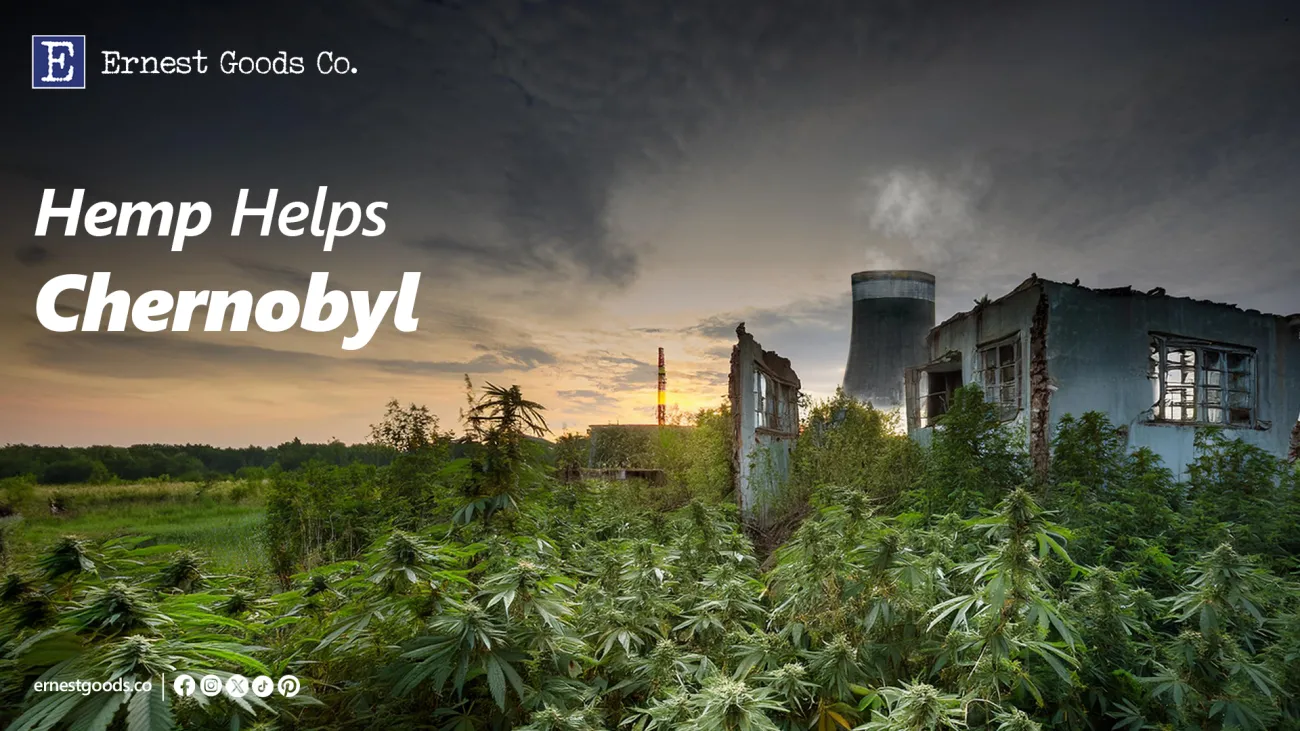

The explosion of Reactor No. 4 at the Chornobyl Nuclear Power Plant in Ukraine on April 26, 1986, released a large number of radioactive isotopes into the air, which contaminated large land areas across Ukraine, Belarus, and Russia. Cesium-137 and strontium-90 radioactive isotopes found their way into the soil and water systems, offering a long-term ecological and health threat. The evacuation of nearby populations and an exclusion zone around the plant followed immediately, but no answer was found to the question of how to clean up the radioactive soil.
Following this catastrophe, many innovative solutions were found to remediate the contaminated lands. Of all these remarkable approaches, one refers to the industrial hemp used to help restore the Chornobyl region.
This blog will discuss how hemp is being applied to provide environmental restoration support through a process known as phytoremediation.
Phytoremediation: Nature's Cleanup Crew
Phytoremediation is a newly developed bioremediation technique that utilizes plants to absorb, concentrate, and even break down contaminants in soil and water. The method is attractive as inexpensive and ecologically benign compared to invasive or toxically impacting remediation technologies.
Why Hemp?
Industrial hemp, Cannabis sativa, has recently become recognized as an outstanding candidate for phytoremediation because of the following characteristics:
Deep Root System: Hemp has a deep and robust root system that can go very deep into the soil, reaching pollutants other plants cannot reach.
Accumulation of Metal: Hemp can accumulate heavy metals, including lead, cadmium, and nickel, in the tissue without phytotoxic effects; this provides it with an influential role in cleansing contaminated soils of those dangerous substances.
Rapid Growth: Hemp grows fast and can reach maturity for harvest within a very short period, making it a suitable crop for extensive remediation.
Commercial Viability: After harvesting, the hemp biomass can be processed further in the fields to produce biofuel, textiles, and construction material, thus giving economic motivation to grow hemp biomass on contaminated sites.
Hemp’s Role in Chornobyl’s Recovery

After the accident, scientists started considering the possibility of using hemp to clean up the surrounding contaminated areas of the Chernobyl nuclear plant. In 1998, industrial hemp was introduced into the overall remediation process to decrease soil toxicity within the 30-kilometre atomic plant area.
Research Findings

The literature states that hemp reduces levels of radioactive isotopes in contaminated soils.Cesium-137 and strontium-90 Absorption: Studies showed that hemp absorbed large amounts of cesium-137 and strontium-90 from the soil.
These isotopes are especially notorious because they have long half-lives; cesium-137 has a half-life of approximately 30 years—emphasizing their removal for long-term environmental health.
Ecosystem Restoration: While hemp thrived in otherwise barren landscapes, it contributed to the land's decontamination and restoration work to revive the ecosystem. It was making habitats for local wildlife, creating biodiversity in previously dead areas due to radiation.
Challenges and Way Forward

Hemp appears to be a promising solution to the phytoremediation of Chernobyl, but issues arise with the use of hemp:
Legislative Issues: The legal status of hemp cultivation differs in different countries and could be a concern for widespread implementation.
Public Perception: Misconceptions about hemp based on its popularity with marijuana are likely to delay acceptance from local communities and governments.
Contaminated Biomass Disposal: This should be disposed of or processed carefully as it is rich in toxic metals after harvesting. Still, despite the risks and difficulties, research into new means of using hemp for environmental clean-up continues at various places around the world.
The story of the interaction between hemp and the aftermath of the Chornobyl disaster testifies to nature's capability to solve problems creatively. Industrial hemp can be targeted as a tool to work toward phytoremediation and reinstate polluted environments, and as an added economic reward, this multifunctional plant can provide revenue.
As we find more and more eco-friendly solutions to environmental issues, Ernest Goods continues to contribute awareness for the unbelievable potential of hemp both as a product and as a critical ally in ecological restoration.
To learn more about how hemp can positively impact our environment or explore our product line, visit us at ernestgoods.co!